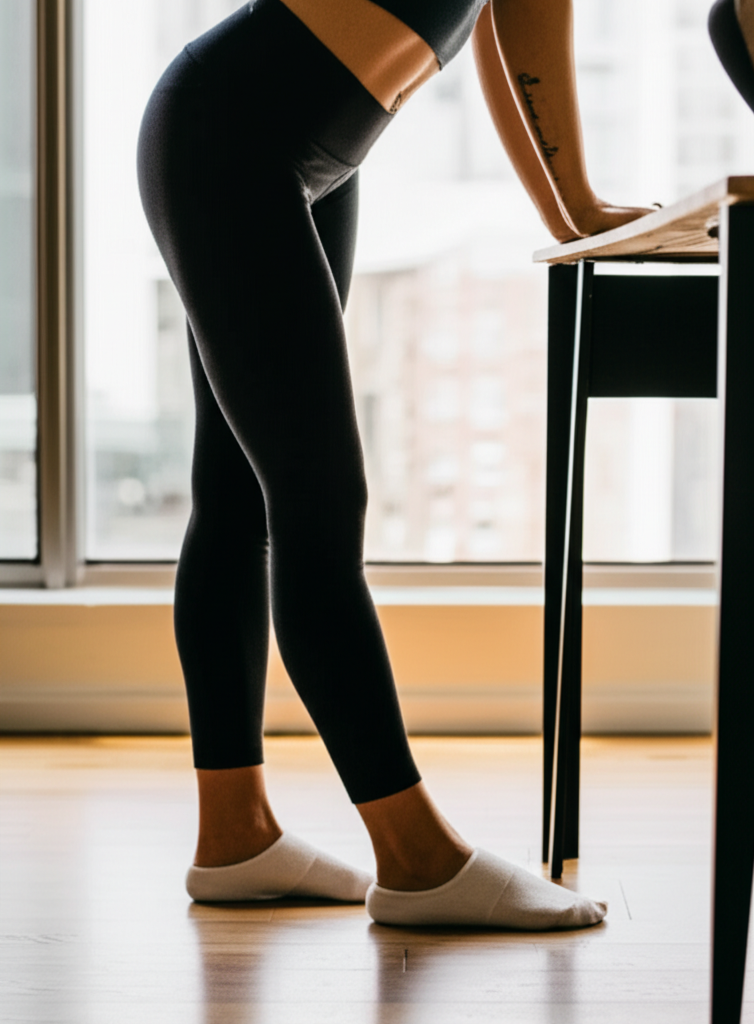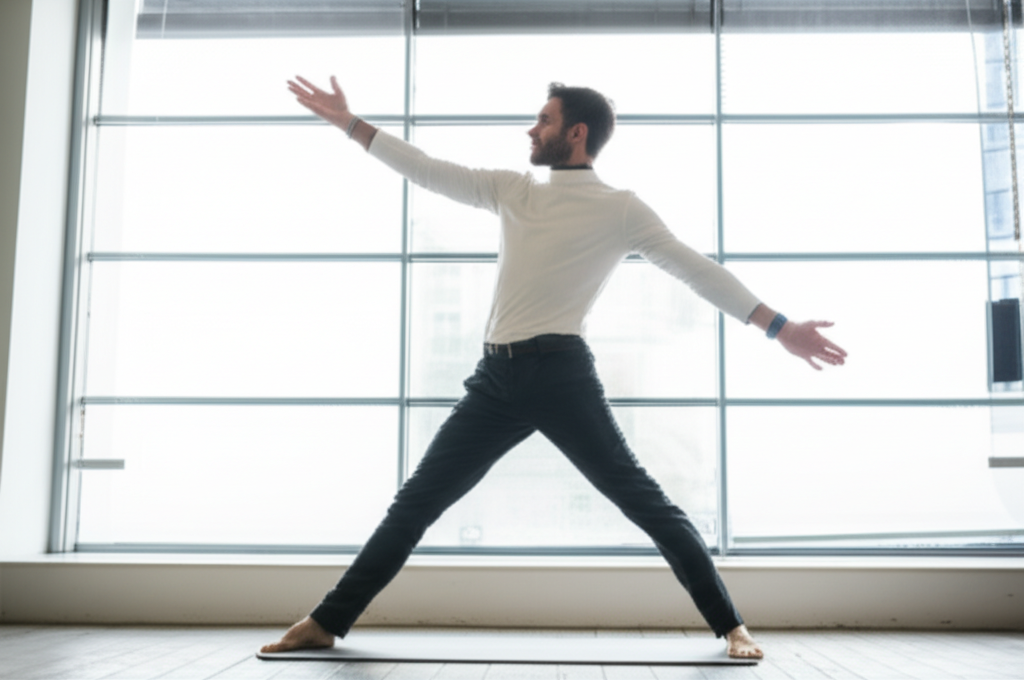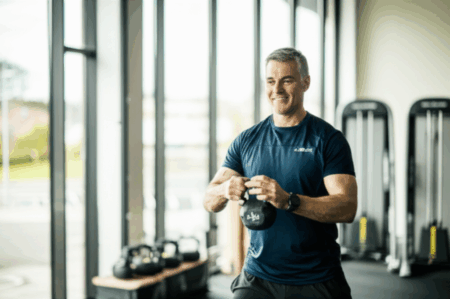Spending countless hours seated, whether at a desk, in a car, or on the couch, has become an unavoidable part of modern life for many. This sedentary lifestyle, however, comes at a cost, contributing to a host of physical discomforts, including tight hip flexors, a stiff lower back, rounded shoulders, and a perpetually craning neck. If you often find yourself feeling rigid, achy, or older than your years after prolonged sitting, a quick, targeted stretch routine can offer immediate relief and prevent long-term issues.
This article outlines a powerful 5-minute routine designed to counteract the negative effects of sitting, focusing on key areas that become tight or weak. By incorporating these “movement snacks” into your day, you can improve posture, restore circulation, boost energy, and enhance overall well-being without needing a full workout.

Why Prolonged Sitting is Detrimental to Your Body
When you sit for extended periods, several parts of your body are adversely affected:
- Hip Flexors Shorten: Your hip flexors, located at the front of your hips, remain in a shortened position, leading to tightness and reduced mobility. This can impact your gait and contribute to lower back pain.
- Glutes Become Dormant: The gluteal muscles are underactive, potentially leading to weakness and a diminished ability to stabilize the pelvis.
- Lower Back Stiffness: The natural curve of your lumbar spine can flatten or round, placing undue stress on the discs and muscles of your lower back.
- Rounded Shoulders and Forward Head Posture: Hunching over a keyboard or screen encourages internal rotation of the shoulders and a forward head posture, tightening the chest muscles and straining the neck and upper back.
- Decreased Circulation: Blood flow can become sluggish, potentially leading to stiffness and reduced oxygen to muscles and the brain.
The good news is that even short, consistent bursts of movement can significantly mitigate these effects. Rebecca Bossick, Co-Founder & Lead Physiotherapist at One Body LDN, emphasizes that “small, frequent bursts of movement, what I call ‘movement snacks,’ can be spread throughout the day to keep your body engaged”.

Your 5-Minute Instant Relief Stretching Routine
This routine targets the primary areas affected by sitting, requiring minimal space and no special equipment. Aim to perform each stretch for approximately 30-60 seconds, or 3-5 repetitions per side.
1. Hip Flexor Stretch (1 minute total – 30 seconds per side)
Why it helps: Counteracts the shortening of hip flexors caused by prolonged sitting.
How to do it (Half-Kneeling variation):
- Kneel on the floor with one knee down (e.g., right knee) and the other foot flat on the floor in front of you (left foot), with the knee bent at a 90-degree angle.
- Ensure your trunk is tall and your hands are on your front knee for balance.
- Gently squeeze the glute of your back leg (right glute) and shift your hips forward until you feel a stretch in the front of your hip and thigh.
- Hold for 30 seconds, then switch sides.
2. Seated Spinal Twist (1 minute total – 30 seconds per side)
Why it helps: Releases stiffness in the mid-back (thoracic spine) and stimulates blood circulation in the abdomen and back.
How to do it:
- Sit tall in your chair with both feet flat on the floor.
- Inhale, raising both arms overhead. On the exhale, twist your torso to the right, placing your right hand on the back of the chair and your left hand on the outside of your right thigh.
- Gently deepen the twist, looking over your right shoulder.
- Hold for 30 seconds, breathing deeply.
- Return to the center and repeat on the left side.
3. Chest Opener (1 minute)
Why it helps: Addresses the rounded shoulders and hunched posture by stretching the pectoral muscles and opening the chest.
How to do it (Doorway or Seated variation):
- Doorway version: Stand in a doorway, place your forearms on either side of the frame with elbows bent at 90 degrees. Gently lean forward until you feel a stretch across your chest and shoulders.
- Seated version: Interlace your fingers behind your back (palms can face either way). Straighten your arms and gently lift your hands up a few inches, pushing your chest forward and squeezing your shoulder blades together.
- Hold for 30-60 seconds.
4. Seated Figure-Four (Glute & Hip Stretch) (1 minute total – 30 seconds per side)
Why it helps: Opens up tight hips and stretches the glutes, which can become inactive from sitting.
How to do it:
- While seated, cross your right ankle over your left knee.
- Sit up tall with a straight back.
- Gently lean forward from your hips, keeping your back straight, until you feel a stretch in your right glute and hip. You can also gently press down on your right knee to deepen the stretch.
- Hold for 30 seconds, then switch legs.
5. Neck and Shoulder Release (1 minute total)
Why it helps: Relieves tension in the neck, upper trapezius, and shoulders, which often bear the brunt of stress and poor posture.
How to do it:
- Side Neck Stretch (30 seconds per side): Sit tall. Gently tilt your right ear towards your right shoulder, feeling the stretch on the left side of your neck. You can lightly place your right hand on your head to add gentle pressure. Hold for 15 seconds, then repeat on the other side.
- Chin Tuck (30 seconds): Sit or stand with a neutral spine. Gently tuck your chin in as if trying to make a double chin, pushing your head back slightly. You should feel a slight tension in the front and back of your neck. Hold for 5 seconds, release, and repeat several times.

Make it a Habit: Consistency is Key
While these stretches offer instant relief, consistency is paramount for long-term benefits. Integrating movement breaks every 30-45 minutes throughout your workday can prevent muscles from stiffening, improve posture, and boost circulation. “By pairing movement with daily routines, your body is constantly reminded that it’s meant to move,” explains Rebecca Bossick. Over time, this routine can significantly transform your daily work experience, making you feel more alert, energized, and resilient.







